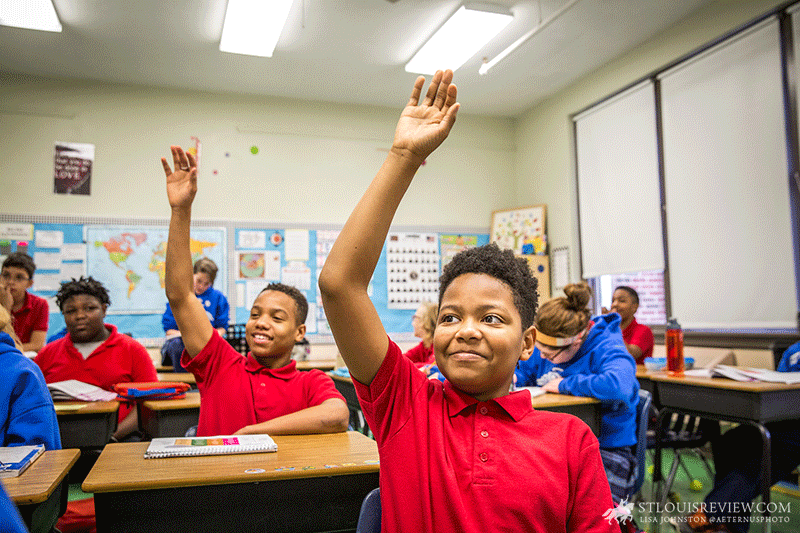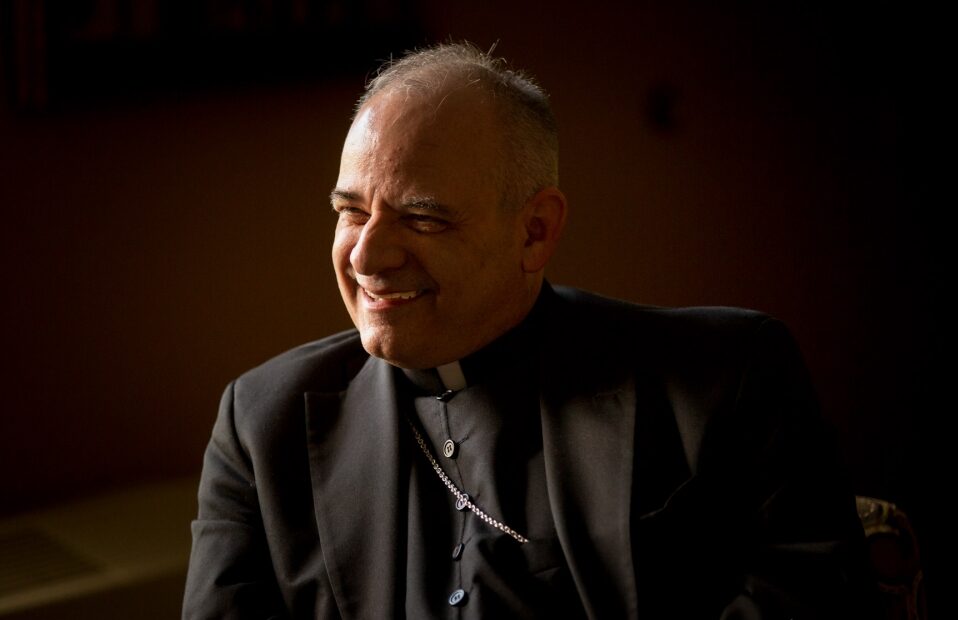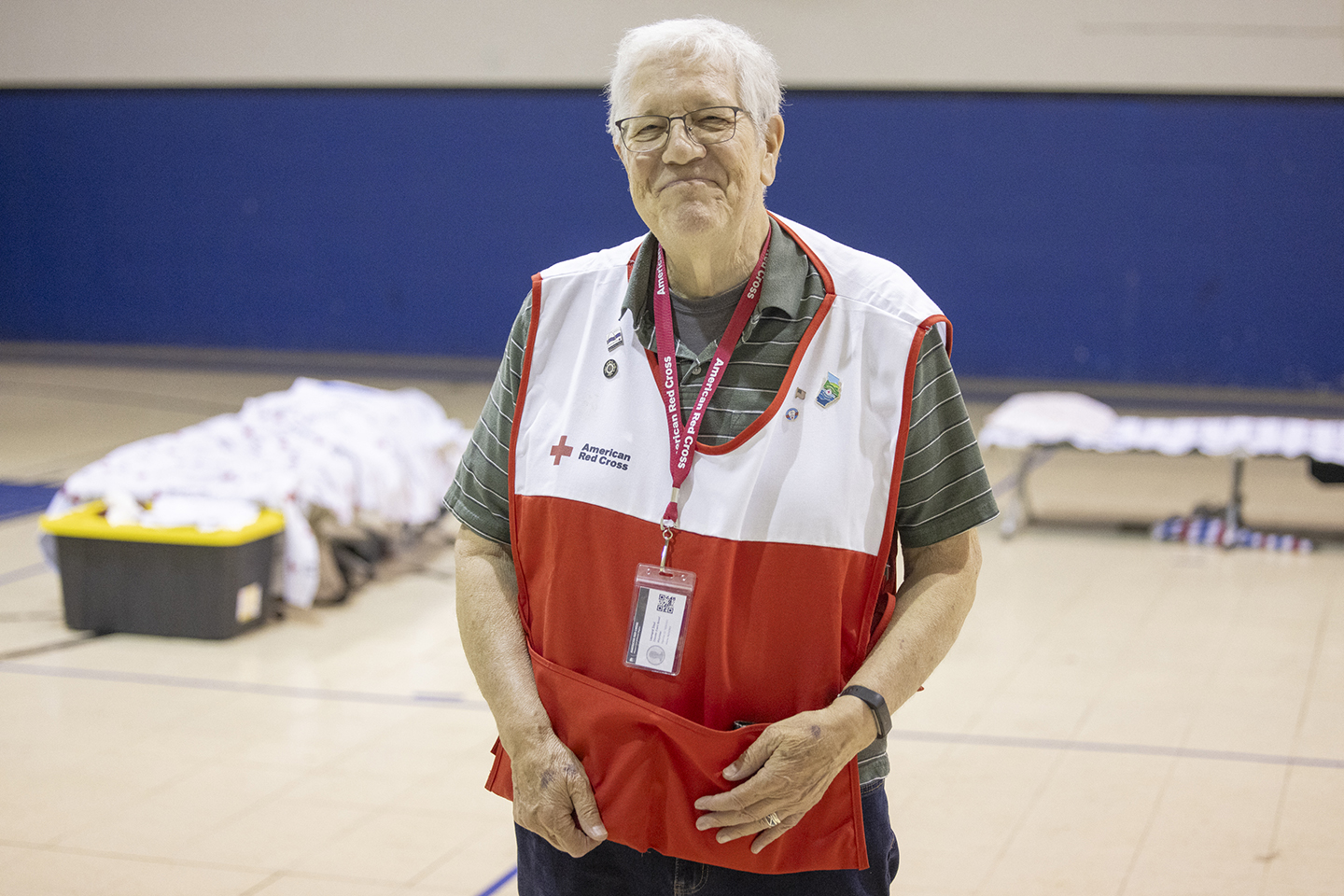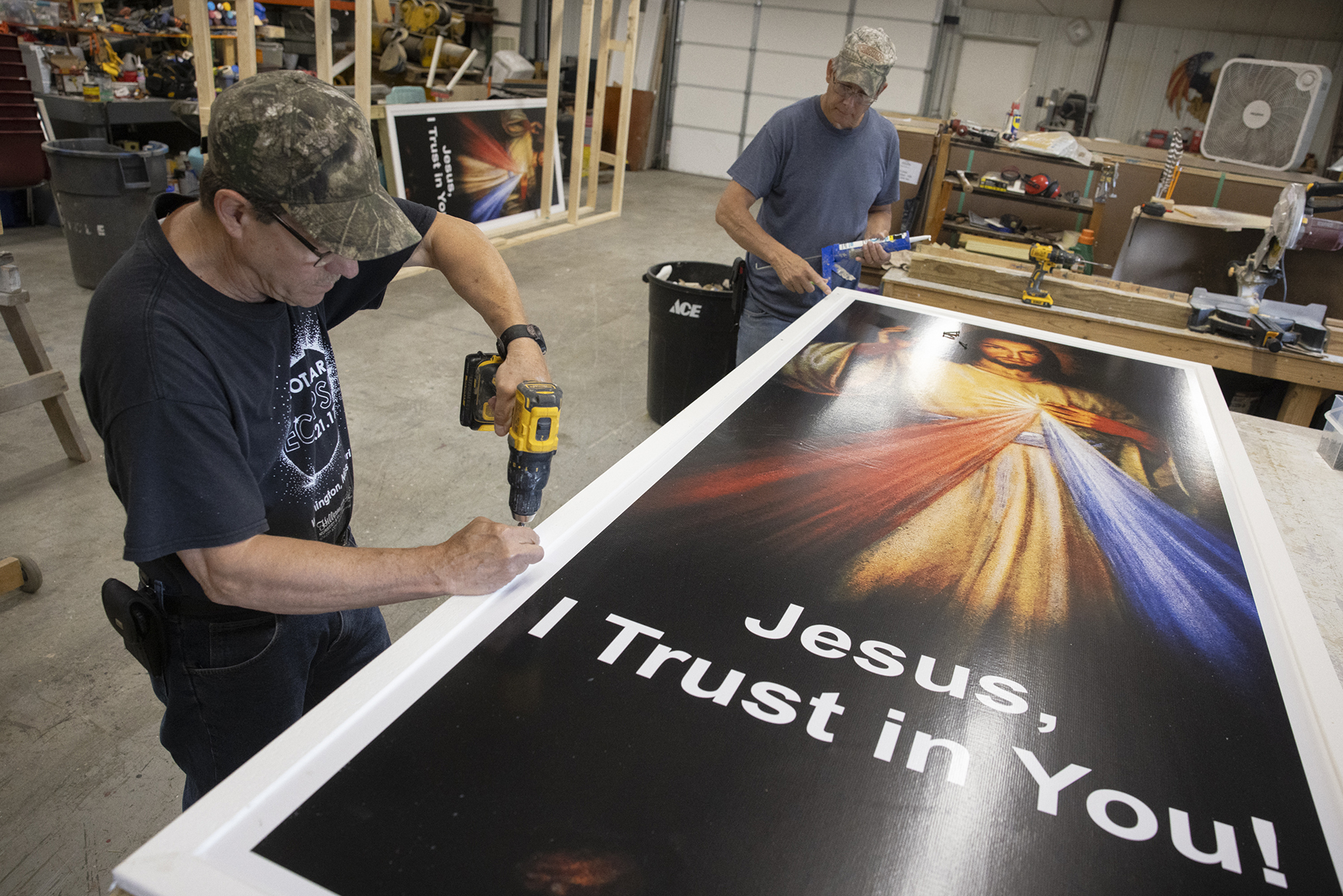Balance of solidarity, subsidiarity guide future of Catholic schools

Kurt Nelson sees the future of Catholic education in the archdiocese as that of balancing a set of scales. On one side you have subsidiarity — the principle of making decisions at the most local level possible. On the other, you’ve got solidarity — Catholics throughout the archdiocese acting together as one Body in Christ.
“We want people to do the things they need to do, to have those freedoms,” the superintendent of Catholic education said. “And where they have challenges, we want the solidarity piece to show how we are working as a larger Church. It’s a balancing of both of these.”
In the past three months, Catholic education in the archdiocese has witnessed a visible “renaissance,” as the Catholic Education Office describes it. In October, three schools in south St. Louis were recommended for a new partnership model that would employ a shared governance. That plan, which would combine St. James the Greater, Our Lady of Sorrows and St. Joan of Arc into one new school at the St. Joan of Arc site, was approved by Archbishop Robert J. Carlson in December.
Members of the archdiocesan School Oversight Committee also have been visiting schools in north St. Louis County this month to propose several options for future governance, including the partnership model at four schools (St. Ferdinand, St. Norbert, St. Angela Merici and St. Rose Philippine Duchesne) and the possibility of the archdiocesan elementary school model at other schools. (See related box for definitions.)
The new models will be part of a new toolbox, joining the traditional parish school model that has been used for generations, as the archdiocese considers the future of Catholic education here. So why suggest several models of governance, rather than creating something new altogether and applying it throughout the entire archdiocese? As the eighth-largest Catholic school system in the country, covering 11 counties, “things are going to be very different in some parts of the archdiocese compared to others,” Nelson said. “There’s really not a one-size-fits all solution.”
That was evident as the School Oversight Committee met with parents and parishioners of Blessed Teresa of Calcutta in Ferguson earlier this month. The product of a consolidation of several schools in 2005, Blessed Teresa is being considered as a possible archdiocesan elementary school model in 2017-18. Approximately half of the parish offertory goes toward the school — the average parish school takes in about 25-30 percent in parish subsidy — and receives approximately $250,000 in financial assistance from the archdiocese each year.
The school would not be able to operate without archdiocesan support, said Mike Duffy, a member of the School Oversight Committee. “We will continue to invest in Catholic education here in Ferguson, but we can’t continue to do things the same way anymore.”
An archdiocesan elementary school model might be a good fit for Blessed Teresa, where there are limited options for quality education in the area. With this model, “we take the financial burden off the parish,” said Maureen DePriest, associate superintendent for elementary school administration.
The Catholic education system for the past several decades has been largely decentralized. The introduction of these new models shows a sense of solidarity while also keeping the principle of subsidiarity wherever possible. This is also changing the way in which the Catholic Education Office serves the archdiocese’s 112 elementary and 27 high schools.
“People in our office have different areas of responsibilities — leadership development, accreditation, school personnel,” said Nelson. “They have a specific expertise but also have a role as a contact person for several different regions (of the archdiocese). If schools seek advice or need help … we serve more as a consultant with schools as needed.”
A new director position being implemented next year in the City of St. Louis and proposed for North County would provide greater oversight of all schools in that concentrated area of the archdiocese, serving as a representative of the superintendent as part owner of those schools.
“We want that region’s director to become that person who focuses on that one region as their only responsibility,” said Nelson. “So rather than being pulled in multiple directions, that person can focus 100 percent of attention to that one area.”
St. Louis is not alone in considering new possibilities in Catholic education, said Nelson. Other major archdioceses, including Chicago and New York, have proposed and implemented new models of governance.
Nelson looks to St. Rose Philippine Duchesne as as example of perseverance as she developed new models of Catholic education. Facing the trials of a new frontier when she arrived in St. Charles in 1818 — lack of housing, cold, harsh weather and a language barrier — did not hold her back from the possibilities.
“People often romanticize her story, but she was pioneering some new things that hadn’t been done before,” Nelson said. “She was pushing educational frontiers. We’re looking at the same thing today. It’s not acceptable for us to keep the parish school model where it is not working, simply because that’s the way we’ve always done it. Dioceses are being more intentional about helping schools build quality Catholic education and collaborate with each other.”
>> Models of Catholic Education
Archdiocesan Elementary School Model: These schools are owned and operated by the archdiocesan Catholic Education Offices including religious education and academic programs, school personnel and facilities maintenance. The parish pastor at each site has the responsibility for the spiritual and sacramental life of the school community, and the Catholic Education Office oversees the day-to-day operations. These schools are generally in areas where it is essential to maintain and grow quality Catholic education, and financial assistance is offered to students. Schools that currently use this model include St. Louis the King School, Most Holy Trinity and St. Louis Catholic Academy in north St. Louis, and St. Cecilia in south St. Louis. Several schools in north St. Louis County are being considered for this model.
Partnership Model: With this model, the archdiocese partners with parishes and schools on decisions regarding governance, leadership, curriculum, programs and personnel. Overseeing the partnership is a corporate board that includes the archbishop, pastors and the superintendent of Catholic education; and a board of directors including representatives from each of the four parishes. A new position also would be created within the Catholic Education Office with responsibility for all elementary schools within the specific area.
A similar effort was implemented in 2012 at Holy Cross Academy in south St. Louis County, which addressed the governance of one school community operating on four campuses. The partnership model has been proposed at a new school being formed at St. Joan of Arc in south St. Louis, and among four schools in north St. Louis County, beginning in the 2017-18 school year.
Parish School Model: This is the traditional model currently used by most elementary schools in the archdiocese. Under this model, the pastor and principal are leaders of the school, and they work with a parish-based school board.
For more information on the ‘renaissance’ of Catholic Education, visit: www.archstl.org/renaissance
>> National enrollment data
Nationally, Catholic school enrollment reached its peak in the 1960s with more than 13,000 schools and 5.2 million students — the children of World War II Baby Boomers — according to data from the National Catholic Educational Association. The traditional parish school model served this population well for decades.
But into the 1970s and 1980s, the number of students and schools nationally were on a steep decline. By the 1990s, the NCEA reported that there were about 2.5 million students in 8,719 schools. In the past decade, the number of schools nationally decreased by about 1,000, and the number of students declined by about 409,000.
In the Archdiocese of St. Louis, the number of elementary students declined by about 7,500 and 3,100 in Catholic high schools (which includes archdiocesan, parish and private) in the past 10 years. The number of elementary schools has decreased from 127 to 112; and high schools from 29 to 27, in the past 10 years.
RELATED ARTICLE(S):
Kurt Nelson sees the future of Catholic education in the archdiocese as that of balancing a set of scales. On one side you have subsidiarity — the principle of making … Balance of solidarity, subsidiarity guide future of Catholic schools
Subscribe to Read All St. Louis Review Stories
All readers receive 5 stories to read free per month. After that, readers will need to be logged in.
If you are currently receive the St. Louis Review at your home or office, please send your name and address (and subscriber id if you know it) to subscriptions@stlouisreview.com to get your login information.
If you are not currently a subscriber to the St. Louis Review, please contact subscriptions@stlouisreview.com for information on how to subscribe.







